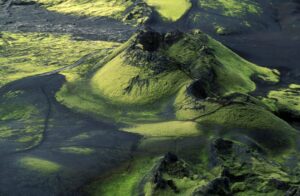This was one of the most destructive and deadly in Mexico’s history.
On September 19, 1985, Mexico was hit with an earthquake of magnitude 8. Its epicenter was in a subduction zone in the western part of the country, in Baja California near Michoacan. At least 9,500 people were killed, about 30,000 were injured, more than 100,000 people were left homeless, and severe damage was caused in parts of Mexico City and in several states of central Mexico. It is estimated that the quake seriously affected an area of approximately 300,000 square miles, caused over three billion U.S. dollars of damage, and was felt by almost twenty million people.
This was one of the most devastating earthquakes in the history of the Americas and it was followed by major aftershocks. In Mexico City, on the opposite side of the country, shaking from the quake lasted three to four minutes. The most damaged zones were those in the bed of the historic Lake Texcoco, where the prevailing silt and volcanic clay sediments amplified the shaking. Building damage was worsened by occurrences of soil liquefaction, causing loss of foundation support and settlement of large buildings. Altogether four hundred buildings collapsed and another 3,000 were seriously damaged. Extensive damage also occurred all across the country.
The earthquake generated a small tsunami and the first aftershock that had a magnitude of 7.5 produced a small second tsunami. Both tsunamis spread across the Pacific and were recorded by several tide stations in Central America, Colombia, Ecuador, French Polynesia, Samoa, and Hawaii. No reports of damage were received from any of these stations and the only minor damage due to the first tsunami came from the source region. Seiches were observed in East Galveston Bay, Texas and in swimming pools in Texas, New Mexico, Colorado, and Idaho. Water well fluctuations were recorded at Ingleside, Texas, Santa Fe, New Mexico; Rolla, Missouri, Hillsborough County, Florida, and Smithsburg, Maryland.
Compared with California which, in the course of the twentieth century, experienced five earthquakes of magnitudes greater than 7, Mexico had forty-two, most of them leading to a high death toll of human lives. The September 1985 quake happened in a seismicity gap that had been identified by geologists as a risk area for the previous ten years. Fortunately, the earthquake struck early in the morning of September 19 before schools and offices in Mexico City were occupied because it was there that the greatest death toll occurred when buildings collapsed. The length of the intervening distance between the earthquake’s source and Mexico City greatly reduced the amplitude of the seismic waves so that very few structures that were built on firm soil and rock suffered damage.





















